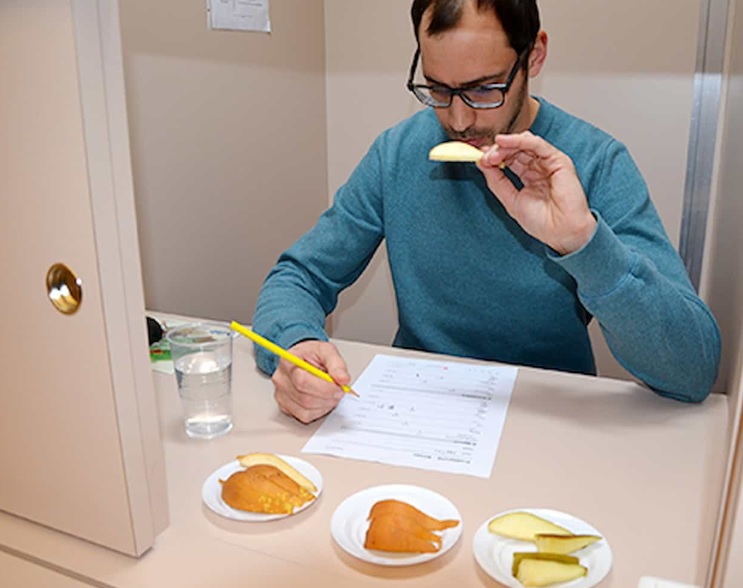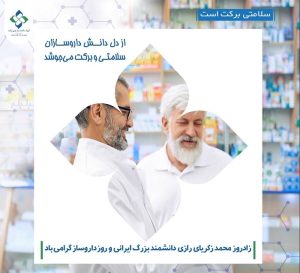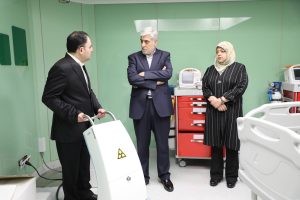
Sensory Evaluation: A Pillar of Food Literacy
Barekat Health & Pharmaceutical Group: In today’s fast-paced world—where food shopping increasingly relies on sprawling supermarkets and complex supply chains—many families have forgotten one of the simplest yet most powerful tools for ensuring food safety: the human senses.
Over thousands of years, our senses have evolved to detect even the subtlest signs of spoilage or contamination. Yet, modern lifestyles, consumerism, and overreliance on attractive packaging have dulled this natural alert system, leaving many people blind to even the most obvious signs of danger.
In this context, sensory evaluation of food is no longer a luxury or optional skill—it’s a vital necessity for safeguarding family health and reducing the financial burden of preventable diseases.
Global Risk of Unsafe Foods
According to the World Health Organization’s latest official estimates, more than 600 million people fall ill each year due to contaminated food—that’s 1 in every 10 people worldwide. These illnesses result in over 420,000 deaths annually and place a tremendous economic strain on healthcare systems and national productivity.
The financial toll includes both direct and indirect costs—ranging from medical expenses to lost labor and reduced productivity. These figures make it clear: food safety management shouldn’t end at the factory gate or laboratory; it must extend into every household.
What’s more, the majority of foodborne illnesses are entirely preventable—if consumers know how to evaluate food using their senses and trust their body’s natural warning signals.
What Is Sensory Evaluation and Why Does It Matter?
Sensory evaluation refers to the intentional and trained use of the five senses—sight, smell, taste, touch, and even sound—to assess food quality in terms of appearance, flavor, aroma, texture, and more.
This method is not just useful for families—it’s a core component of quality control in advanced food industries worldwide.
Before releasing any product, major food manufacturers conduct structured sensory tests using trained panels to detect even the slightest changes in taste or smell.
For everyday consumers, mastering a few simple skills—such as recognizing the sharp odor of spoiled meat, spotting mold in dairy, or noticing discoloration in vegetables—can mean the difference between health and illness.
Local Expert Perspectives
The Director General of the National Reference Laboratories for Food, Drugs, and Medical Equipment recently emphasized that “Sensory evaluation should become part of the public’s nutritional literacy.”
According to Dr. Mehdi Ansari Doghahe, when people learn these skills, they become a new line of defense in the national food safety system—significantly reducing cases of food poisoning and complaints about substandard products.
He adds that widespread consumer awareness also pressures manufacturers to maintain higher standards, knowing their customers are no longer passive and uninformed.
Science Behind It: How the World Implements Sensory Evaluation
In many developed countries, sensory science is a well-established discipline with clearly defined methods and international standards. The International Organization for Standardization (ISO) has published detailed guidelines covering every stage of sensory evaluation.
Students in nutrition, food science, and even retail workers are trained to assess food quality without expensive tools—just by using their eyes, nose, and palate. On factory floors, trained sensory panels routinely conduct structured tests to detect subtle changes in product quality before it reaches consumers.
Gap at Home
Unfortunately, in our country, sensory evaluation is still not recognized as a basic life skill, and it is largely absent from formal education. This is concerning, especially as evolving consumption habits and the rise of new food products demand more informed consumers.
Many families have grown accustomed to blindly trusting expiration dates or the appearance of packaging—unaware that poor storage conditions or fraud can turn a seemingly safe product into a health hazard. Ignoring sensory skills imposes a heavy burden on the national healthcare system and increases out-of-pocket costs for families.
Multi-Layered Benefits of Sensory Education
From a public health perspective, sensory training offers a fast, affordable, and grassroots solution to reduce the burden of foodborne illnesses. Not only does it improve community health, it also fosters a culture of accountability among food producers and sellers.
A household that can identify signs of spoilage is less likely to suffer from food poisoning and less dependent on medical services—helping reduce healthcare costs on a national scale. At the same time, widespread consumer awareness pushes producers to maintain higher standards, knowing that quality shortcuts won’t go unnoticed.
Practical Solutions to Build a Sensory-Aware Society
To make sensory evaluation a part of daily life, several practical and effective steps can be taken:
-
Foundational Education in Schools
Teach children simple skills—like detecting the smell of spoiled meat or spotting mold on bread—through health or life skills classes. -
Public Education Campaigns
Develop brochures, short videos, and infographics that explain the basics of sensory evaluation in simple, relatable language for families. -
Media Collaboration
Use television, radio, and social media to run short, engaging educational programs that gradually embed sensory awareness into mainstream culture.
Conclusion: Putting Our Senses Back on the Frontli
The five human senses are our oldest and most powerful tools for evaluating food quality—tools that once ensured our survival, and still hold immense value alongside today’s modern technologies.
Sensory education is the bridge between personal awareness and public safety. If we want to reduce the healthcare costs associated with foodborne illnesses and ensure safer meals for everyone, we must start by empowering families.
It’s time for policymakers, educators, and media leaders to recognize this missing link—and put the human senses back on the frontlines of food safety.
-
Barekat Health & Pharmaceutical Group at the 10th Iran Pharma Exhibition

-
Ali Safa visits Sobhan Oncology & Sobhan Darou

-
Pirsalehi & Safa visit Saman Daroo 8 Knowledge-based Company

-
Barekat Managing Director Visits Samen Pharmaceutical Company

-
Honoring Pharmacists’ Day

-
Barekat Top Executives Visiting to Barekat Hospital

-
Alborz Darou honored as Top Exporter of Qazvin Province in 2024

-
Footsteps & Gazes of Disease: A Revolution in Early Diagnosis

